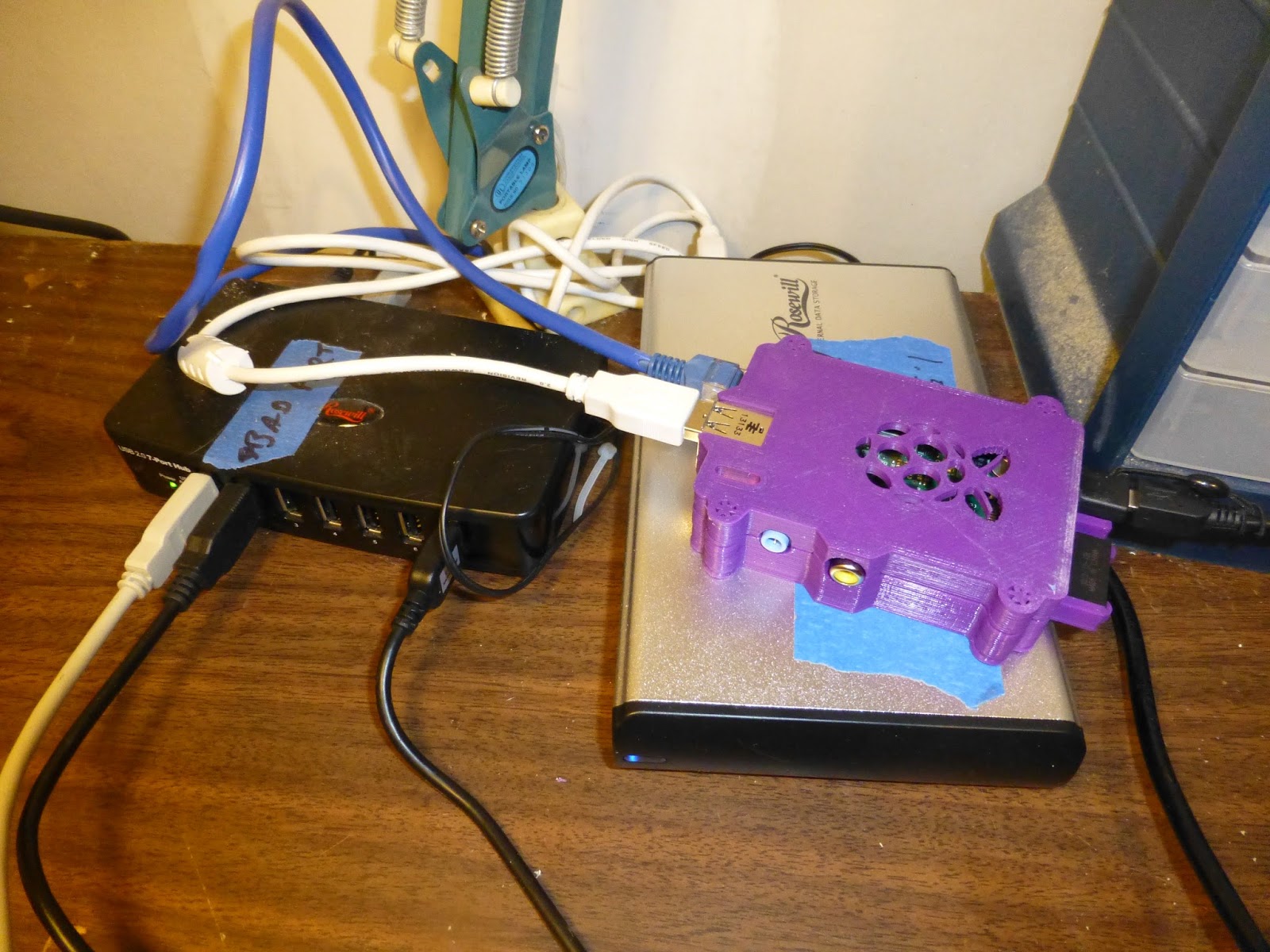I've had a Raspberry Pi single board computer sitting around for a year and
hadn't figured out anything I wanted to do with it. If you're not familiar
with it, the Raspberry Pi is a small, maybe a bit bigger than a credit card
sized computer. It costs about $35 and is actually a fairly capable little
machine; it can run Linux, has ethernet, USB and HDMI outputs.
I decided to set it up as a file server. I like having a Linux box that is
always on to run scripts regularly to do things like download and archive
my podcasts. I figured that with an external green drive that spins down
when not used, it would draw less than 10 watts on average.
I got things working well enough, then printed a case for it. It's living
on the workbench in my lab, powered off a powered USB hub (so the adapter
is always on anyway, not adding another bit of phantom draw there). Here's
what it looks like in the case I printed (available on Thingiverse)

( mind numbing detail behind cut )
hadn't figured out anything I wanted to do with it. If you're not familiar
with it, the Raspberry Pi is a small, maybe a bit bigger than a credit card
sized computer. It costs about $35 and is actually a fairly capable little
machine; it can run Linux, has ethernet, USB and HDMI outputs.
I decided to set it up as a file server. I like having a Linux box that is
always on to run scripts regularly to do things like download and archive
my podcasts. I figured that with an external green drive that spins down
when not used, it would draw less than 10 watts on average.
I got things working well enough, then printed a case for it. It's living
on the workbench in my lab, powered off a powered USB hub (so the adapter
is always on anyway, not adding another bit of phantom draw there). Here's
what it looks like in the case I printed (available on Thingiverse)
( mind numbing detail behind cut )